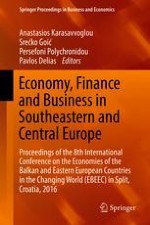2018 | OriginalPaper | Chapter
Employee Performance, Working Time and Tiredness in Creative R&D Jobs: Employee Survey from Estonia
Authors : Aaro Hazak, Marko Virkebau, Viiu Tuulik, Piia Tint, Viive Pille, Erve Sõõru
Published in: Economy, Finance and Business in Southeastern and Central Europe
Publisher: Springer International Publishing
Activate our intelligent search to find suitable subject content or patents.
Select sections of text to find matching patents with Artificial Intelligence. powered by
Select sections of text to find additional relevant content using AI-assisted search. powered by
